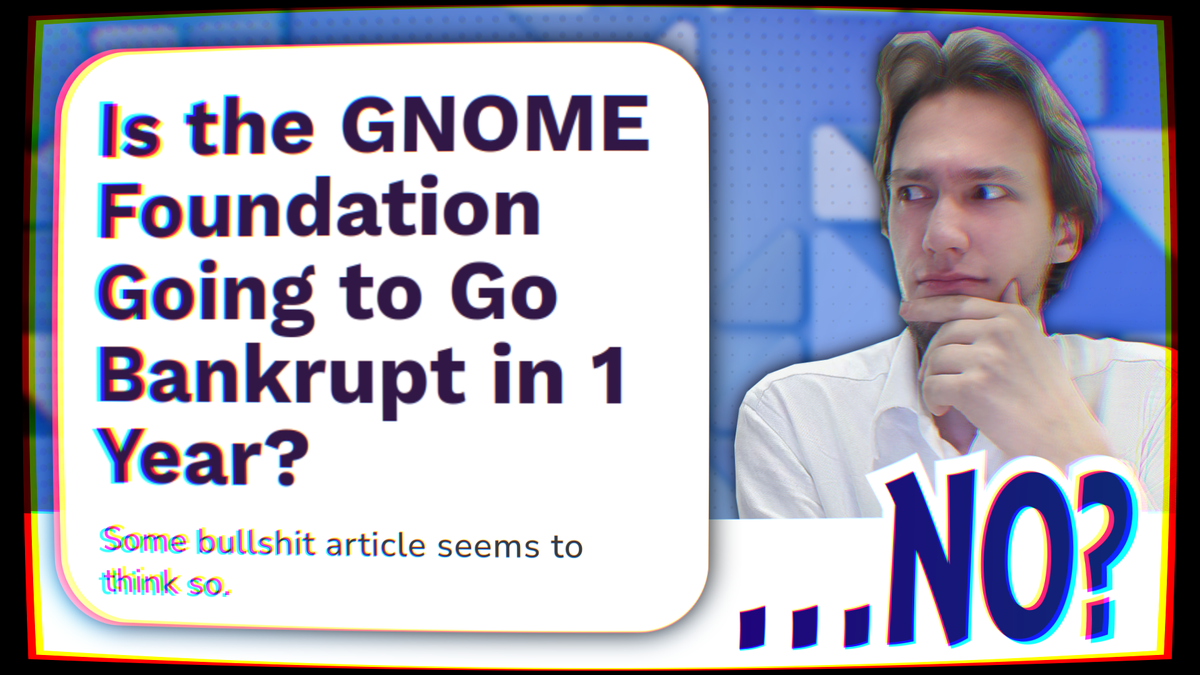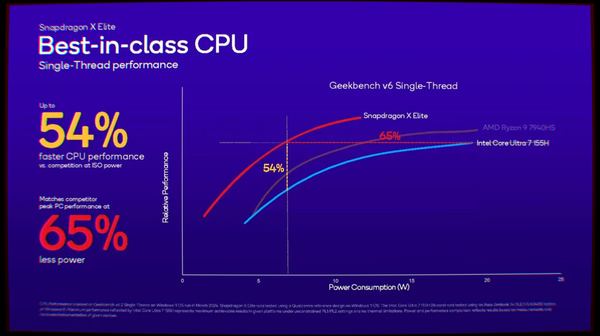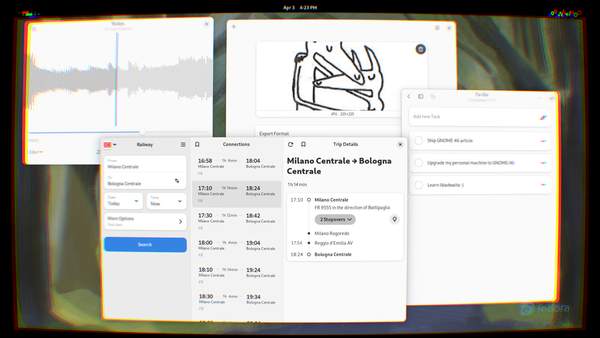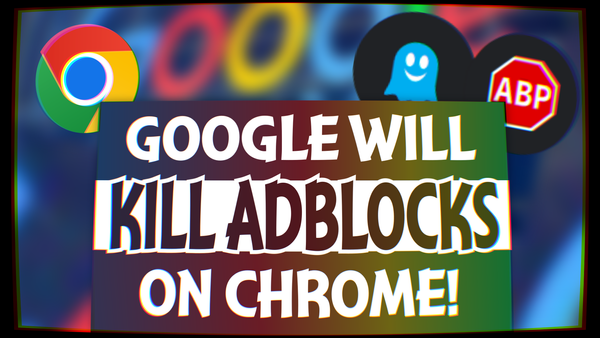Everything about the GNOME finance situation

Today I'd like to tell a story of extraordinary journalistic malpractice. This morning, whilst going to University, I was sent a post called "Is the GNOME Foundation Going to Go Bankrupt in 1 Year? It looks that way" – which is one hell of a claim.

This video will not only explain what's going on over the GNOME side of things, but it will also cover how so-called Linux journalists can attempt to re-frame facts to spin up a toxic narrative.
Let's start with the news. Currently, both the GNOME foundation and the KDE eV are in extremely similar spots.


They have received very large amounts of money some years ago, but they are non-profits, meaning they have to use that money. As a result, both organizations grew their spending with the explicit goal of operating at a deficit, spending more money compared to what they receive. That's completely normal.
Let's get some numbers. In 2022, the deficit for the GNOME and KDE foundations were €296k and €100k respectively, and in 2021 it was €640k and just €20k for KDE, but that was an exception.
The challenge that both KDE and GNOME are facing right now is: now that have mostly burned out the large chunks of money that we received years ago, how can we reduce the deficit, maybe even go back to earning money, and preserve as much as our previous operations as possible?
Well, the first obvious answer is: we can do fundraising.

KDE has organized a very big fundraiser for the Plasma 6 release with the goal of extending the number of KDE memberships, people who donate to the organization every year. We started off with something like, 50, maybe 100 members… and now we have 1092. Which directly translates to €120 to 130k extra income, maybe even more than that. We've also considered hiring a fundraising manager, which would handle this kind of initiatives in the future.
GNOME did that. They knew they had to either raise more money or cut back on the spending, so they decided to hire somebody that had experience in, well, raising money.

And that would be Holly Millon, who joined GNOME just six months ago as Executive Director. She served as a consultant and executive director of many non-profits, she founded one (called Artists United), and previously served as Executive Director of the BioBricks Foundation. Again, this move was done by the GNOME foundation in the wider context of shifting from years of doing deficit thanks to previous big donations to something else.

Artists United is not longer operative since 2021, but we still can see an archived copy of the website and its social network accounts. It was indeed founded in 2017 by Holly, and just next year she was able to raise around €20k at the very beginning of a fundraising campaign that had a €50k goal. We can see all the activities and events organized by them. They exist.

BioBricks, the other company she's been Executive Director of, also existed, and it seems like she has done further work in the fundraising world. This quote is from the bio page in the BioBricks website:
In 1997, she secured funding for the Academy Award-winning film, A Story of Healing, and today she continues to raise money for an eclectic mix of independent films. As a director, Million created Changing Room, a dramatic film that had its television debut on PBS in 2005.
She was the producer and director of a bunch of other (admittedly, small) films, and has a Master of Arts from Stanford University and a Bachelor of Arts from Harvard University. It's pretty clear that she has experience with fundraising and managing non-profit organizations.
She, however, does not have knowledge of Linux or GNOME that we know of. I think the main focus of the GNOME hiring team was to find someone with great experience in fundraising and at managing non-profits, and that was valued more than knowing what GNOME does. Honestly? I can fully understand that decision.
We finally get to two days ago, when the GNOME board president - Robert McQueen - published an update from the board covering the finances, strategy, the future of the board organization, and so on. This contains many technical points, such as decision to elect two more people to the board in order to have 9 people instead of 7. (Volunteers, by the way – board members are not paid).

What raised most concern was the financial situation. McQueen shared that the GNOME Foundation has an internal policy that specifies a minimum amount of money to be kept in GNOME's bank account. The idea is that, if anything happens, if income goes down, we still have some money to pay everyone for at least a year. After three years of deficit from the Foundation they have hit that minimum amount, meaning that - from now on - they won't be able to spend any money that they didn't earn.
As a result, Holly has prepared a break-even budget to be approved from the Board in October. That budget will dictate the spending from the next fiscal year, and - again - it's break even, so that the GNOME foundation keeps above - or a little bit below - that minimum amount of money in the bank.

We can only speculate on how much that minimum amount is. We do know that towards the end of 2022 the GNOME project had declared to the IRS to have ~€854k in savings, and assuming that they've been spending money at the same rate as 2022 they should now have more than €404k. There's also €42k in receivables that should bring that up to €446k. This is purely an estimate and the actual number is most likely higher, since the McQueen talked about the Foundation already being more "careful with spending".
Even if that number was correct, however, we shouldn't be particularly surprised or worried, as the GNOME foundation has had this kind of money in the bank before, with even higher expenses and incomes compared to today. In 2011, a bit of time ago, they had roughly $350k in the bank.
Meanwhile, Holly has been preparing on a variety of fundraising activities that will be launched in the coming months. There will be a development fund to allow people to donate towards GNOME development, there's professional grant writers working to apply to government and private funding opportunities, further work with corporate sponsors, and so on. The goal here is to make sure that GNOME has to cut as little as possible from what they are currently doing: they have to break-even in the next budget, so they more money they have, the more they can keep up whatever they were doing before.
GNOME did recently receive a €1M grant from the Tech Sovereign Fund, but that came with a contract on how to exactly spend that money, and it's going to happen all in this fiscal year, so it won't have a significant impact on GNOME finances at all, we can see it as a bit of an extra that allow to hire people during this year to work on accessibility and more.
Most importantly, though, GNOME is not in any financial danger, there's no fear that it's going to go bankrupt, there's a clear plan ahead within the board, there's still money in the bank accounts, there's still the usual income, they knew that this was going to happen and that's why they hired somebody experienced in this kind of things.
This does not mean that we can or should "stop caring", or stop asking the GNOME foundation about more details on the financial situation, it's still a something which requires some careful handling… but no, the GNOME foundation is NOT going bankrupt in a year. Neither is KDE, which I think has roughly the same finances. Roughly.
And that was news. It was not particularly exciting, was it? But now we get to the fun part, because - come on - you just have to let me have some fun. I promised I would talk about journalistic malpractice – let's do it.

Firstly, this joke of a journalist begins the article by saying that the GNOME foundation has been "unusually silent about their operations – not publishing any public reports for closing in on 2 years now". Which sounds bad: why has GNOME stopped telling us about their financial situation?
Well, it's bullshit. How things work in the non-profit world - and I'm talking about GNOME, but I'm also talking about KDE - is that you spend some money during a certain year, and then you work on a full report of everything that happened during that year, and then you publish it. Usually, it takes quite a bit of time for the promotional team or the board to put together the report; KDE eV takes around six months, thus publishing it around July, and the GNOME foundation decided to always publish them during their annual conference, GUADEC, that also happens in July. This means that the data about 2022 expenditures was published in July 2023, and the data about 2023 will be published in July 2024. This is completely normal, it's what KDE does too, and it has always been like this since 2016. There's literally nothing weird going on. We just have to wait three more months and we'll get last year's data.

Then, this guy summarized the whole discussion about hitting the minimum amount of money in the bank in this simple statement: "GNOME has run out of money". Which is bullshit, again! Running out of money means … running out of money, whereas we can still easily estimate the GNOME foundation to still have around half a million euros in their savings.

The commentary about this whole this is so high-level that, after presenting the 2021 expenditure numbers, he says: "Notice how the expenses far exceed the revenue? Not good. boy howdy, is it deep into the negative". Sure. Let's just … forget about the fact that non-profits have a legal requirement to actively spend their revenue, and are required to do deficit if they have too much money.

And then, still in the same article, he tries to estimate the current money reserves of GNOME through IRS reports. However, he completely leaves out the amount of money that GNOME has in non-interest-bearing accounts, and only focuses on the savings and cash investments. The distinction is there because savings account still are interest-bearing accounts, meaning that the GNOME foundation is - rightfully - earning interest on that money. However, they also have €89k in non-interest-bearing accounts, such as in their checking account. And this is still not counting the €42k that GNOME has in total accounts receivable, which is the outstanding invoices that the GNOME foundation expects to be paid.
Due to all of these mistakes and oversights, this "Linux Journalist" comes up with a total estimated savings of €296k, which is way too low of an estimate.

And, finally, he justifies the title of his amateur blogpost: if the numbers he gave were correct (and they aren't), and if the GNOME foundation were to keep spending money at the same rate (and they won't), then they would run out of money in April 2025 – completely disregarding the fact that Holly has prepared a break-even budged.

But of course, he also start attacking Holly. He says that her only previous job was "Professional Shaman", completely disregarding all of her actual work experience that I've outlined earlier on. He says that GNOME is in "total silence" about future plans, even though McQueen's own post talks about changes in budget and the new fundraising events.

And, finally, all of this is blamed on politics, by showcasing one Twitter post from the GNOME VicePresident that simply said that "inclusion, sustainability and diversity" were the focus of one discussion with Holly. I don't even know what to say. The rest of the article is ramblings, attacks on the Linux Foundation, and further fear, uncertainty, and disorder.
Now, according to McQueen, Million has worked on a detailed five year strategic plan that will be shared by the Foundation over the coming weeks. This is good news, and I'm really looking forward to hearing it.
'till then, this was Nicco Loves Linux, and I still hate people who intentionally present made-up fact and numbers. See you soon!





